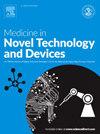Research progress and prospects of experimental murine behavior evaluation methods
Q3 Medicine
引用次数: 0
Abstract
Experimental murine behaviors, including communication, emotional expression, social interaction, learning, and reproduction, play a critical role in various research fields such as genetics, neuroscience, and non-neuroscience disciplines. The growing demand for murine behavior research has driven the development of diverse evaluation methods. Current evaluation techniques include assessments based on ordinary or high-speed cameras, active depth sensors, inertial sensors, optical pressure plates, electromyography, and two-photon fluorescence microscopy. Each method has its unique advantages and limitations depending on the experimental context. Therefore, selecting an appropriate evaluation method tailored to specific experimental requirements is crucial for obtaining accurate and meaningful results. This review summarizes the advancements in experimental murine behavior evaluation methods over the past decade, providing a comprehensive overview of their applications and contributions to behavioral research.
实验小鼠行为评价方法的研究进展与展望
实验小鼠的行为,包括交流、情感表达、社会互动、学习和繁殖,在遗传学、神经科学和非神经科学学科等各个研究领域发挥着关键作用。对小鼠行为研究的需求日益增长,推动了多种评估方法的发展。目前的评估技术包括基于普通或高速相机、主动深度传感器、惯性传感器、光学压力板、肌电图和双光子荧光显微镜的评估。每种方法都有其独特的优点和局限性,这取决于实验环境。因此,选择适合特定实验要求的评估方法对于获得准确而有意义的结果至关重要。本文综述了近十年来实验小鼠行为评价方法的研究进展,并对其在行为学研究中的应用和贡献进行了综述。
本文章由计算机程序翻译,如有差异,请以英文原文为准。
求助全文
约1分钟内获得全文
求助全文
来源期刊

Medicine in Novel Technology and Devices
Medicine-Medicine (miscellaneous)
CiteScore
3.00
自引率
0.00%
发文量
74
审稿时长
64 days
 求助内容:
求助内容: 应助结果提醒方式:
应助结果提醒方式:


